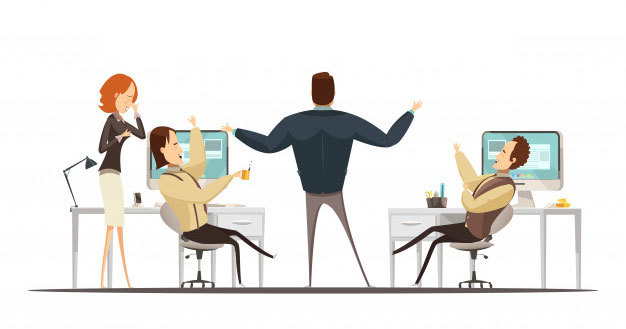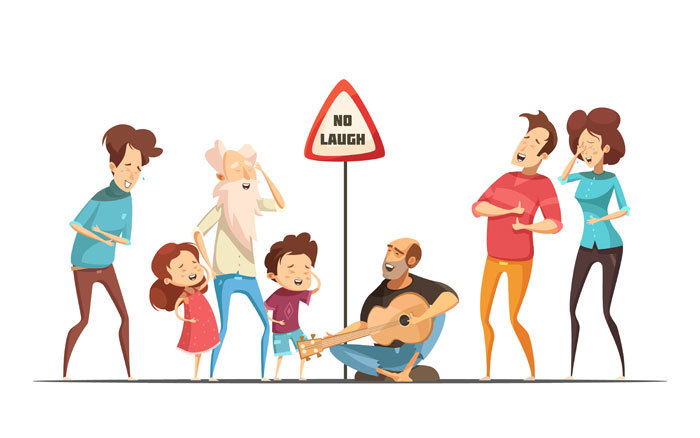Formal vs Informal Presentations: A Complete Breakdown
Have you ever kept funny snaps of your friends or siblings to play them on a big screen on their birthday?
Whether it be a corporate setup, college project, or merely a friends get-together slideshow, presentation skills always leave your audience with a great impact.
Knowing what type of presentation will serve you best and capture your audience's attention is vital for its success.
With that in mind, here we break down the ins and outs of formal and informal presentations. Hopefully, you’ll find all your answers in the next 5-6 minutes.
Formal vs Informal Presentation Styles
Formal Presentations
These are the types of presentations one would give in a formal setting, as the word itself suggests, something you would do in an office or a business meeting, sometimes even a job interview.

Thus, there are many crucial factors that you should keep in mind while preparing for this type of presentation. Some of the most significant factors are as follows:
- Choosing the right topic
- Knowing the audience
- Informative rather than creative
- To the point
- Length as required
- Proper dressing and body language
- Keep the jokes to a minimum
- Keeping the audience's interest without losing the essence
- Choosing the suitable color scheme for a slideshow
- Proper structure and formats
If your setup ticks everything on this checklist, then you're good to go!
Informal Presentations
Now, these are the types of presentations you would give in a more straightforward and friendly setting, something you would give in a lighter note to your friends & family or co-workers.
This would include a family slideshow, memories from a trip, or pitching an idea to your colleagues before you give your boss the formal version of it.
Here is the 10-point consideration list for informal presentations
- Choose a captivating topic
- Creativity plays a significant role
- Proper dressing isn't a must
- Body language should be more open and welcoming
- You probably should keep a couple of jokes in
- Keep it short but get your point across
- Put more pictures to keep your audience glued
- More engagement with the audience
- Prefer more bright colors
- Formats and structure aren't important
This list makes sure to give you and your audience a lovely time!
How to Decide Which Presentation Would Be the Best?
A Formal Situation
Has the boss asked you to do some work? Or are you preparing to impress those investors? Perhaps a group project in front of the whole school? Or a dream job interview?
All those are straight-up indicators that a formal presentation would do you best. This is because all these situations demand a degree of seriousness and professional work as you would be working towards portraying your presentation as a skilled worker who keeps everything to the topic.
Here are a few indicators to look out for
- Is the work official?
- Has it been assigned to me by someone of authority?
- Does it have deadlines?
- What's at stake?
- How important is the responsibility?
- Is there a format/structure for it?
- Will you have to present in an organized setup?
As such, deciding the right type to present might go a long way.
An Informal Situation
Is it for recreational purposes? Are your close friends the audience? Are you presenting photos of a recent trip? Game night with family?
It's a no-brainer that all these situations call for an informal presentation, as instead of worrying about being professional, you have to be concerned about keeping everyone interested.
Furthermore, this doesn't necessarily have to be too serious and should be held on a much lighter note compared to formal situations.

Here are a few indicators to look out for
- Is it an unofficial work?
- Have you decided to make a presentation yourself?
- Do you decide on the deadlines?
- Not too much at stake?
- Do you determine the format?
- Will you present in an informal setup?
- Does the responsibility depend on you?
To conclude, a rightly made presentation leaves a significant impact.
That is what we will talk about next!
How to Make the Right Presentation for the Right Situation
Steps to Make a Formal Presentation
To make this type of presentation, here are things required beforehand:
- Proper research
- Using information from trusted sites only
- Compilation in a brainstorming document
- Choose a solid but formal color scheme
- Limit the number of slides
- Research your content thoroughly for any questions
- Filter any unwanted data from your research
- Make a mind map of how you want your presentation to look like
- Organize all your information in the formats provided
Done with these steps? Now onto things to ensure you are ready for the big day:
- Check if your presentation is in one flow
- Avoid monotony
- Make sure you practice your speech enough
- Try a mock presentation to calm any nerves
- Make sure your tone is just right
- Practice a serious body language
- Pick out an outfit that fits right to your presentation
- Make sure you look presentable
That said, a formal presentation also requires some post-presentation work. This involves a fair question-and-answer session to encourage feedback from your audience and welcome any criticism. Moreover, these can be essential steps to gain your audience's respect.
Steps to Make an Informal Presentation
To make this type of presentation here are things required beforehand:
- Collect all your information that will interest your audience
- Source of information shouldn't be an issue
- Brainstorming is optional
- Bright colors will make your presentation look more lively
- Don't make it too long and boring
- Memorizing information isn't a must
- Fill it with pictures
- Choose the right theme
Done with these steps? Now onto things to ensure you are ready for the big day:
- Make sure it isn't mundane
- Have a lively tone
- Involve and engage everyone
- Time isn't a constraint as long as everyone is enjoying
- Include jokes and interesting analogies
- Choose an outfit that fits your theme
- Involve skits and other presenters to mix things up
The post-presentation work requires asking people for their views on it. Ask them what they liked best and what you could do better; start a conversation.
Types of Presentations
Formal
- Informative Presentation: This is the most used type of presentation, be it in a school setting, office, or corporate situation. The purpose of an informative presentation is to give information about a sample, concept, or idea to a particular type of person.
- Persuasive Presentation: Persuasive presentations are to encourage or compel someone to work or make a difference in their life or views.
- Demonstrative Presentation: A demonstration requires a presentation or the working of a product or procedure in a step-by-step manner.
- Inspirational Presentation: An inspirational presentation aims to affect or emotionally impact your presenters. Using explanations, talking about personal experiences, or even a keen sense of humor work in miles to perfect your presentation as people develop a sentimental bond to the presentation.
- Business Presentation: A business presentation can involve pitching a new product or conveying and selling a product to your investors. You can prepare a business presentation individually or collectively. You then base the content on your or the client’s needs and present it in a way that sells your idea to the client.
- PowerPoint Presentation: PPTs are the most commonly used type of presentation used almost worldwide for any kind of setting. PPTs have preset formal templates that you can use for any sort of presentation mentioned above.
Informal
- Interactive Presentation: This can contain interactions and choices with which the presenter or the audience can interact, which decides the course of the presentation.
- Slideshow Presentation: This usually contains a picture of either an event or a specific trip intended to show to friends or family. It barely has text and focuses more on visual aids.
Related: 14 Types of Speeches for All Occasions
Mixing It Up: The Formal and Informal Presentation Hybrid
A hybrid means a mixture or something in between two extremes. Have you ever wondered what creating a formal and informal mixture hybrid would be like?
This would mean that while your audience can be a mixture of both, we can go out on a limb and be more flexible. This implies while wearing formal clothes, we can still have a sense of humor.
Additionally, while using bright colors, we can still keep the information serious and to the point.
When to use this, though?
You can use this hybrid in situations where you are the one in the position of authority and you are the one responsible.
One can use this to portray their uniqueness, impress, and leave a significant impact.
Summary: Informal vs Formal Presentations
A presentation is said to be formal when you have been asked by someone else in authority to share your ideas with a specific audience and have also been provided preparation time.
Additionally, formal presentations call for a totally different approach compared to an impromptu meeting.
Will you be standing in front of hundreds, or will you speak to a limited number of people? Will you be presenting to your boss and investors? Or are you presenting a family slideshow?

You must know the people you will be presenting to, so you can shape your content in order to them. Furthermore, handing out brochures or flyers can also have a lasting effect on the audience.
Formal presentation equals formal wearing, whereas informal leans towards something more casual. A proper suit or a business dress is the way to go. Don't forget to stand up before presenting, though!
Have a question-and-answer session! Ask them about their opinions.
Informal presentations are more of an action and looking out for a reaction setup, keeping your audience interested and interacting. It ends up being a fun conversation.
Formal presentations are more about you talking and them listening. Whereas informal ones are interaction and engagement based.
It is preferred to encourage discussion during an informal presentation and let it take its course while also returning to the topic naturally.

Choosing the right color schemes and slide lengths for any kind of presentation can decide its fate. It directly affects interaction rates and the audience's willingness to engage with the given work.
The hybrid system is the one where we can include both types of presentation to create something unique. However, it may be unconventional but can end up being totally out of the box if done correctly.
Conclusion
To conclude, presentations can be a daily routine in our work and school lives.
Among the various types of presentations, choosing the right one is the first and somewhat the most crucial step as it will decide the success of your presentation.
Properly conducting yourself and choosing from suitable options can go a long way. Formal and informal presentations require different approaches, content, and styles.
Thus, you should understand your audience and the purpose of the presentation before deciding on a method. That said, we hope you understand what's best for you. Happy presenting!
